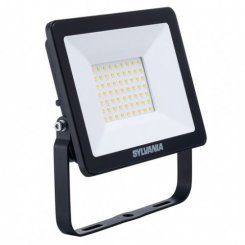Upgrading to LED Class A: The New EU Energy Labels Explained
Since 1st September 2021, the EU brought new regulation changes in the energy department, which redesigned the way we had grown used to seeing energy labels. This change affects domestic users down to professionals. The new system will now make the energy rating more straightforward, clearer for consumers to understand when making choices in regards to energy-efficient products, such as LED light bulbs. By 1st March 2023, it will be a whole new understanding of energy efficiency once complete implementation is in place.
What's changing with Energy Labels?
Until recently, energy labels had categories from A+++ to D. However, these labels became increasingly out of date as technological improvements, especially in LED lamps, meant that the vast majority of products were classified A+ or A++. Under the new system, a simpler scale from A to G is reintroduced:
- A represents the most energy-efficient products.
- G represents the least energy-efficient products.
The aim, while overhauling it, ensures that only the most energy-efficient LED light bulbs would continue to have an 'A' rating as setting a new benchmark to define true sustainability. The new LED energy rating charts have made comparisons quite effortless for the user in their buying decision.

Why Upgrade to LED Class A?
It is subtantially worth upgrading to LED Class A for several reasons, long heralded for their energy-saving benefits, LED light bulbs and lamps show their value in a number of ways.
| Pros: | Cons: |
| Energy Efficiency: LED Class A products are much more power-efficient than their forerunners, which means lower electricity bills. Environmental Benefits: It means lesser energy consumption, which in turn means less carbon emission, hence aligning with global sustainability initiatives. Long Service Life: LED lamps can have a life of as long as 25 times that of conventional incandescent bulbs. Enhanced Brightness and Quality: LEDs allow for higher quality of light with minimal heat output. |
Higher Initial Cost: These LED light bulbs have a higher initial price as compared to lower-rated LED light bulbs, such as Class A-rated ones. Availability: Class A LEDs might be difficult to find during the transition period of the market. |
Understanding LED Energy Ratings
With the new system, LED light bulbs will be labeled differently than ever before. Here's the quick and dirty:
LED Energy Rating A: This is the gold standard in terms of efficiency. These bulbs provide the most savings and environmental benefits.
F LED Energy Rating: The less efficient options, but outperform the older incandescent and halogen bulbs.
The light bulb energy rating chart is your go-to guide to select the right product that will bring into view power consumption, brightness-in lumen, and energy class for an overall view of its performance.
Light Bulb Energy Rating Explained
Understanding the new labels is key to making informed decisions. Each label includes:
Energy Class: the new A-G scale.
Power Usage: Measured in kilowatt-hours per 1,000 hours.
Lumens: Refers to brightness.
The chart of the LED rating, when it comes to comparing products, will definitely make this process a lot easier in order to make the best possible choice regarding performance and efficiency. Why Now Is the Time to Upgrade The transition to the new labelling system gives the perfect opportunity to reassess your options in lighting. Move to LED Class A and ensure that you invest in the most modern technologies that offer economic and environmental benefits. With the new energy labels, it's easier now than ever to be that homeowner looking to cut bills or as a contractor to advise clients. Gone are those confusing A+++ ratings.

Upgrading to LED Class A Costs
The transition to LED Class A includes an initial investment, though the savings over time will far exceed the upfront costs. Here's a breakdown:
Average Price of LED Class A Bulbs: £8 to £16 per light.
Energy Savings: Save up to 90% energy compared to incandescent bulbs.
Return on Investment: This is usually recuperated within 1-2 years, factoring in reduced energy bills.
Industrial and trade users have even more to benefit from in upgrading to Class A LEDs. This value addition would be for the contractors and electricians, since it would give them the opportunity to promote their products in light of future-proofing for clients and in line with the sustainability goals of the EU.
People Love Us
Read our latest reviews. We're proud of the great comments from our past customers. All verified by Reviews.io












